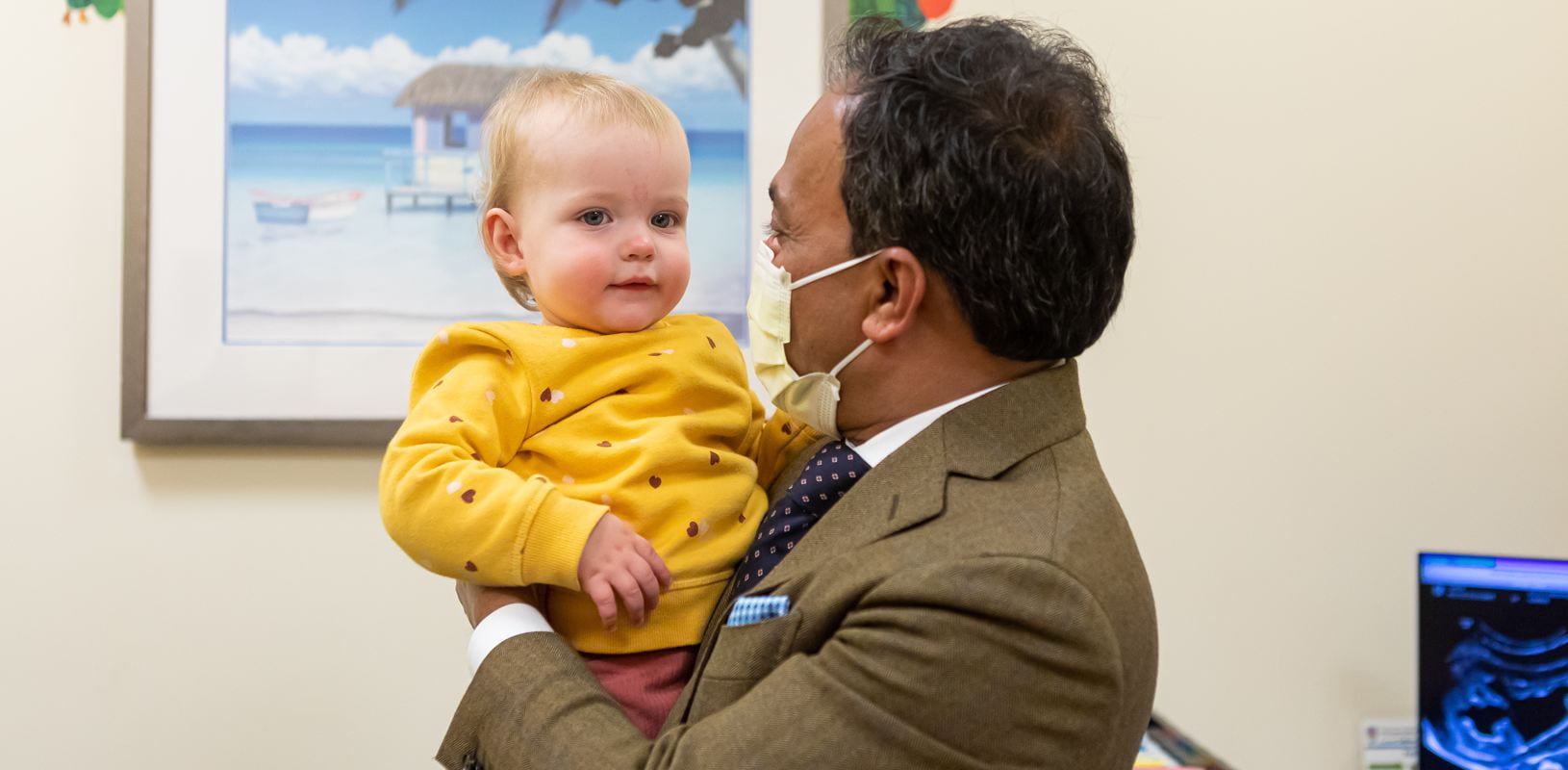OUR CARE
Advancing robotic urologic surgery in even the youngest patients

A dozen years ago, Mohan S. Gundeti, MD, was one of the few pediatric urological surgeons in the country to attempt robot-assisted laparoscopic surgery — a pyeloplasty — in an infant. Two years earlier, he was the first in the world to use a robot for complex bladder reconstructive surgery in a child. Back then, Gundeti used a robotic surgical system and instruments designed for adults. Now, many successful robot-assisted surgeries later, he continues to use adult-sized equipment — still the only option available to the few pediatric urological surgeons who have mastered the technical intricacies of robotic surgery.
“The challenge with infants is having to fit the instruments and perform the surgery in the space the size of a small balloon that may hold about 200 milliliters of water, compared with a two-liter-sized space in an adult,” said Gundeti, Director of Pediatric Urology. “You need expertise and skill to perform the surgery without damaging the surrounding organs while delivering the same or better outcomes than open or laparoscopic surgery.”

Mohan S. Gundeti, MD, MCh, FEBU, FRCS (Urol), FEAPU, during a visit with his patient
Gundeti is an internationally recognized leader in the field of pediatric robotic laparoscopic surgery and is a pioneer in using robotic technology in complex urologic surgeries. In 2007, he founded the minimally invasive robotic pediatric urology program, the first in Chicago, which established the University of Chicago Medicine as a world leader in the field.
Pyeloplasty is one of the most frequent robot-assisted laparoscopic surgeries Gundeti performs in infants and children. Amelia Zegley was diagnosed prenatally with hydronephrosis, a common congenital anomaly. Hydronephrosis occurs in one in 100 children, and surgery is required to remove the ureteropelvic junction obstruction in 1% of these children. Gundeti performed robotic-assisted laparoscopic pyeloplasty to remove the blockage from Amelia’s kidney when she was 6 weeks old.
With open surgery, Amelia would have stayed in the hospital at least two or three days instead of overnight with robotic laparoscopic surgery. She also required less narcotic pain medication compared with infants who have open surgery. “The patient benefits and so does the family, whose lives are much less disrupted with a shorter hospital stay,” said Gundeti. “The child requires less recuperation time, which reduces the loss of capital for the parents and the healthcare system.”
Gundeti is now adding machine learning to further optimize the treatment of infants and children with hydronephrosis. He and his colleagues have received a grant to develop an application of facial-recognition technology — the same used by Facebook — to help them determine which infants and children need surgery to remove the kidney blockage.
The severity of kidney obstructions is based on the clinician’s subjective interpretation, Gundeti explained. “An incorrect assessment by the radiologist or the surgeon can mean kidney damage, infection or even loss.”
“If our machine-learning algorithm is successful for hydronephrosis, we hope to develop the software for other clinical applications in urology and to make it available to other hospitals and surgeons,” said Gundeti.
There continues to be a perception in the medical community that pediatric robotic surgery is only offered to select privileged patients — those with private insurance and living in high-income zip codes, said Gundeti. But that’s not the reality at UChicago Medicine Comer Children’s Hospital, which Gundeti proved in a recently published study in the International Journal of Urology. Among 356 pediatric patients who underwent either robot-assisted laparoscopic surgery or open surgery, he found that the complexity of the case determined the surgical approach, not race or socioeconomic status. “The patients we treat at the University of Chicago come from extremely diverse racial and socioeconomic backgrounds,” said Gundeti. “We have only one rule in the care we deliver: Do what is best for the patient.
